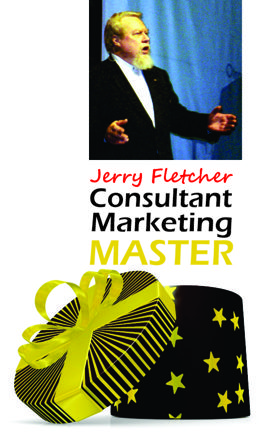Recently, while developing my product called Brandr I realized that most folks don’t understand that Brand has three time components: Now, Later and Long term.

Now, the Short term
This is the part of branding known as brand Identity. It is made up of:
- Name
- Logotype elements
- Graphics
- Positioning Line
Although it contains visual and verbal elements It may also include other sensory triggers like a sound or a smell a color or a touch. Some examples:
- The sound of a Coke being poured into a glass over ice.
- The smell of Cinnabuns in a shopping mall
- The green of Frog tape.
- The way OXO kitchen gadgets fit the hand.
You can take all that in and build a memory in 3 to 5 seconds. Of course, that is literally all the time you have in today’s world. After that your target has moved on from your landing page or your self-introduction.
So much for Now
Later and long term are an entirely different story. Your brand is less about identity and more about the product or service. The way you and your company deal with customers or clients is key. It is less about what you do and more about how and why.
Brain Science
Our human brains naturally parse things into three categories:
- What you do
- How you do it
- Why you do it.
The most important of these is why.
Why operates at the emotional level down in the oldest part of the brain where all decisions are made. That part of your mind is not verbally oriented and in fact does not understand words. It is attuned to feelings., That’s why when you can’t make a decision you will often say, “It just doesn’t feel right.”
This is where empathy resides and the basis for Trust. Logic doesn’t live here. To a great extent each of us have the ability to determine if our why matches up with, complements or is opposed to others. When we are compatible it leads to great teamwork, Trust and long-term acceptance.,
How is your process.
How is the way you get things done. If you are a coach active listening may be critical. Consultants need to know how to analyze problems in ways that point toward solutions. Experts need to demonstrate their knowledge in understandable ways.
Your how needs to combine both visual and verbal memory builders. One of my clients uses a white board to explain his knowledge of the complexities of Supply Chain in ways that make it understandable. Another is the repair person that dons booties over their shoes when they enter your home. Or the computer technician that makes sure your view of operations on the computer doesn’t change while explaining what she is doing step by step.
What do you do?
That question demands an answer in words and is the one we ask first in most cases. Words that paint a picture will serve you best. That’s because we are visually oriented. The letters in our languages are evolved from pictographs and carry some hidden visual meaning in most cases. That’s why we prefer stories to lists and videos to step by step directions
Credibility to Cash
Combining Visual and Verbal in the Now , Later and Long Term will allow you to build an enduring brand.
Jerry Fletcher is a sought-after International Speaker, a beBee ambassador, a BeeKonnected ambasador,founder as well as founder and CEO of Z-axis Marketing, Inc. See Jerry’s speaker demo reel.
His consulting practice, founded in 1990, is known for on and off-line Trust-based Consultant Marketing advice that builds businesses, brands and lives of joy.
Credibility to Cash TM is his latest way to share experiences so you can take your business up a notch…or two.
Consulting: https://www.JerryFletcher.com
Speaking: https://www.NetworkingNinja.com

